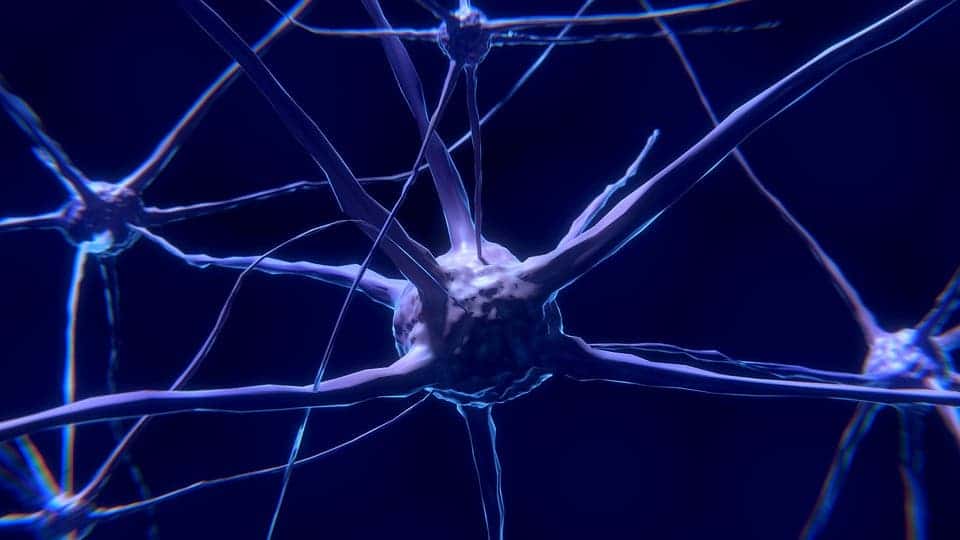A team of Columbia researchers has found the gene that dictates how serotonin-releasing neurons branch out in the brain. Tests on mice engineered to lack this gene showed that their neurons’ dendrites (branches) became entangled, negatively impacted serotonin distribution in their brains and leading to signs of depression.

The findings come from the lab of Tom Maniatis, PhD, a principal investigator at Columbia’s Mortimer B. Zuckerman Mind Brain Behavior Institute, the Isidore S. Edelman Professor and Chair of the department of Biochemistry & Molecular Biophysics at Columbia University Medical Center. Initially, Maniatis set out together with his colleagues to find out how individual neurons in the brain keep track of their neighbors so that their thousands of branches wind through the brain without getting tangled up with others.
They focused on a group of genes called clustered protocadherins (Pcdhs), as previous research has shown that these genes stamp barcode-like compounds on the cell’s surface, so each neuron can distinguish themselves from their other neurons. In broad lines, they work like this: each neuron’s Pcdh code is unique. In the case of a contact, each branch compares its code to the one it touches. If it’s the same, they steer clear of each other to avoid entanglements, a process known as self-avoidance.
In two new papers published in the journal Science, Maniatis and his team detail how in the case of olfactory sensory neurons (OSNs), a diverse range of Phcds work together to make up sufficient ‘codes’ to give each neuron its unique identity. But if there isn’t enough Phcd diversity for each neuron to receive a unique code, OSNs fail to wire properly in the brain and the mice can’t distinguish between different smells. The findings show how important neuronal wiring is to overall brain health and its ability to function properly.
Faulty wiring
Through a series of experiments in mice, Dr. Maniatis’ team identified a single gene within the Pcdh cluster, Pcdh-alpha-c2, that was responsible for the ability of serotonergic neurons to assemble into a tiled pattern throughout the brain and evenly distribute serotonin.
“The main job of these neurons is to distribute serotonin uniformly throughout the brain, which is responsible for maintaining mood balance. To do this, the neurons lay their branches out in a precise, evenly-spaced pattern — a process called axonal tiling. However, the exact mechanism that allows them to do this remained elusive,” said Dr. Maniatis, who is also director of Columbia’s Precision Medicine Initiative.
“We were surprised to find that, unlike other neurons that displays distinct barcodes of diverse Pcdhs, all serotonergic neurons display a single functional recognition protein. Thus, serotonergic axonal branches can recognize and repel one another, leading to their even spacing.”
But by deleting the Pcdh-alpha-c2 gene in these neurons, the team was able to make them tangle and clump together. When the cells released serotonin, it wasn’t evenly distributed through the brain, leading to striking changes in behavior. Pcdh-alpha-c2-deficient mice showed a reduced desire to escape (behavioral despair) and enhanced fear memory (increased freezing when frightened) — both classic signs of depression.
Serotonin imbalances have been linked to a range of psychiatric disorders such as depression, bipolar disorder, and schizophrenia. But most research focuses on problems with the production or uptake of serotonin and ignore the problem of neural wiring, Dr. Manitis adds. The results suggest that psychiatric disorders associated with serotonin imbalances — such as depression, bipolar disorder, schizophrenia, and autism — could be caused by errors in this wiring.
The first paper “Multicluster Pcdh diversity is required for mouse olfactory neural circuit assembly” has been published in the journal Science.
The second paper, “Pcdhαc2 is required for axonal tiling and assembly of serotonergic circuitries in mice” has been published in the journal Science.


